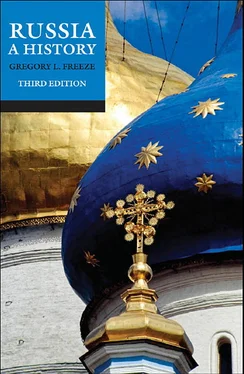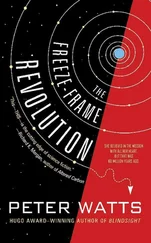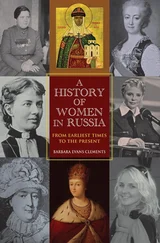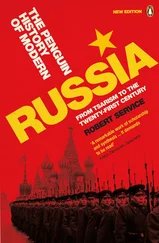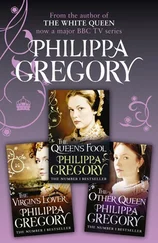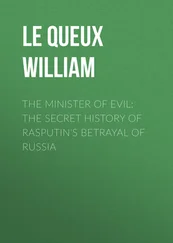These projects brought Byzantine artists and artisans to Kiev. Following Byzantine architectural models, they designed and decorated the early Rus churches and taught their techniques and skills to local apprentices. The visiting artisans were most heavily concentrated in Kiev, which became the centre of craft production in Kievan Rus during the eleventh and twelfth centuries. Native and visiting artisans—blacksmiths and stonecutters, carpenters and potters, leather workers, goldsmiths and silversmiths, glassmakers and bone-carvers—produced an array of products, including stone blocks and bricks for the new cathedrals, armour and weapons for the princes’ retinues, fine jewellery for members of the élite, and pottery and buttons for commoners. The adoption of Christianity also stimulated an expansion of Kievan commerce: marble and glazed tiles, icons and silver frames, and numerous other items used in the construction, decoration, and rites of the churches were added to the silks and satins, wines and oils, and other staple imports from Byzantium.
The expansion of Kiev’s commercial and craft activity was accompanied by an increase in its population. By the end of the twelfth century between 36,000 and 50,000 persons—princes, soldiers, clergy, merchants, artisans, unskilled workers, and slaves—resided in the city. Kiev, the political capital of Kievan Rus, had become the ecclesiastical, commercial, and artisanal centre of the realm as well.
Other towns underwent similar, but less dramatic development. Novgorod was also influenced by Christianity and Byzantine culture. Although it had initially been a centre of violent opposition to Christianity, its landscape too was quickly altered by the construction of new, wooden churches and, in the middle of the eleventh century, by its own stone Cathedral of St Sophia. Although Novgorod’s economy continued to be centred on its foreign trade, by the twelfth century some artisans were emulating Byzantine patterns in new crafts, such as enamelling and fresco-painting. Novgorod’s flourishing economy supported a population of 20,000 to 30,000 by the early thirteenth century. Similar developments occurred in Chernigov, where the Church of the Transfiguration of Our Saviour (1035) had heralded the arrival of Christianity. The construction of the stone Church of the Mother of God in Smolensk (1136–7) and of the Cathedral of the Dormition in Vladimir (1158) proclaimed that wealth and Christianity were spreading across the Riurikid realm.
While architectural design and the decorative arts of mosaics, frescos, and icon-painting, all associated with church construction, were the most visible aspects of the Christian cultural transformation, new literary genres, including chronicles, saints’ lives, and sermons, also appeared in Kievan Rus. Although much of the ecclesiastical literature was translated from Greek originals, the clergy of Kievan Rus also began to make their own contributions. The outstanding products of indigenous literature from this era were the Primary Chronicle or ‘Tale of Bygone Years’ (compiled by monks of the Monastery of the Cave which was founded in the mid-eleventh century outside Kiev) and the ‘Sermon on Law and Grace’, composed ( c .1050) by Metropolitan Hilarion (the first native Rus to be head of the Kievan Church). By agreement with the Riurikids the Church also assumed legal jurisdiction over a range of social practices and family affairs, including birth, marriage, and death. Ecclesiastical courts had jurisdiction over church personnel and responsibility for the enforcement of Christian standards and rituals in the larger community. Although the Church received added revenue from its courts, the clergy were only partially successful in their efforts to convince the populace to abandon their pagan customs. But to the degree that they were accepted, the spiritual guidance, the promise of salvation, and the social norms and cultural forms of the Church provided a common identity for the diverse tribes comprising Kievan Rus society.
As the Riurikid dynasty and Christian clergy displaced tribal, political, and spiritual leaders, their political and religious–cultural structures transformed the conglomeration of East Slav tribes into a dynamic and flourishing state. The political system balanced a diffusion of administrative and military power against principles of dynastic sovereignty and seniority; it elevated Kiev to a position of centrality within the realm; and it provided an effective means of defending and expanding the realm.
Within this system each prince supported his own military retinue, and had the authority and the means to hire supplementary forces; he was also responsible for conducting relations with his immediate neighbours. Thus the princes who ruled Novgorod in the eleventh century pushed the Rus border west to Lake Peipus, provided security for the trade routes to the Gulf of Finland, and also participated in the creation of Novgorod’s northern empire. Similarly, the princes of Suzdal in the twelfth century extended their domain to the north and east—at the expense of the Volga Bulgars. And, through the first half of the eleventh century, the grand princes of Kiev conducted relations with western neighbours (Poland and Hungary), Byzantium, and the Pechenegs on the steppe.
The dynastic system, however, also encouraged co-operation among the princes when they faced crises. Concerted action was prompted particularly by the Polovtsy, another population of Turkic nomads that moved into the steppe and displaced the Pechenegs in the second half of the eleventh century. Prince Vsevolod Iaroslavich of Pereiaslavl, who commanded the first line of defence for the southern frontier, was defeated by a Polovtsy attack in 1061. When they launched a new campaign in 1068, Prince Vsevolod and his brothers, Iziaslav of Kiev and Sviatoslav of Chernigov, combined their forces. Although the Polovtsy were victorious, they retreated after another encounter with Sviatoslav’s forces. With the exception of one frontier skirmish in 1071, they then refrained from attacking the Rus for the next twenty years.
When the Polovtsy did renew hostilities in the 1090s, the Riurikids were engaged in their own intradynastic conflicts. Their ineffective defence allowed the Polovtsy to reach the environs of Kiev and burn the Monastery of the Caves. But after the princes had resolved their differences at a conference in 1097, they once again mounted impressive coalitions that not only repulsed Polovtsy attacks, but pushed deep into the steppe and broke up the federation of Polovtsy tribes responsible for the aggression. These campaigns yielded comparatively peaceful relations that facilitated trade between Kievan Rus and the Polovtsy and kept the trade route linking Kiev and Constantinople secure for the next fifty years.
But the political organization of the Riurikids also contributed to repeated dynastic conflicts over succession to the throne of Kiev. Although the princes were dispersed, it was understood that the senior member of the eldest generation of the dynasty was heir to the Kievan throne. Succession thus followed a lateral pattern, with the throne of Kiev passing to a grand prince’s brothers and cousins, then to their sons.
The proliferation and complexity of the Riurikid family however, generated recurrent confusion over the definition of seniority, the standards for eligibility, and the lands subject to lateral succession. Disagreements over succession provoked intradynastic warfare; the outcome of the conflicts refined the ‘rules’. For example, a challenge to the seniority of Iaroslav’s sons was mounted by a grandson of Iaroslav’s elder brother (concurrently with the Polovtsy attack on the Rus lands in 1068–9); following its failure, eligibility for succession was restricted to those princes whose fathers had been grand prince of Kiev. In 1097, when wars over lands to be transferred along with the Kievan throne became so severe that they impaired a successful defence against the Polovtsy, a princely conference resolved that each principality in Kievan Rus would henceforth be the possession of a single branch of the dynasty. The only exceptions were Kiev itself, which in 1113 reverted to the status of a dynastic possession, and Novgorod, which had asserted the right to select its own prince by 1136.
Читать дальше
